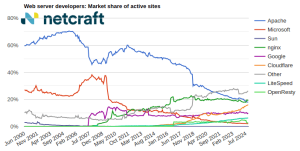The term cloud is thrown around so often and in so many contexts what it actually means seems to be getting lost. I even hear people use the term synonymously with the internet itself. Cloud computing and mobile seem to have completely taken over the industry media yet most people don’t seem comfortable with the terms and ideas. This is quite simply the most important thing to happen to online retail since the wide spread adoption of broadband. Social media has been the big buzz for a long time, but how much actual profit have you been able to trace back to that twitter account? The cloud can save you real money, real time, and when that big break comes it can save your butt. It is vital to your business to take the time to get to know this technology.
So, what is the cloud? What is cloud hosting? At a high level the cloud has come to mean a pool of infrastructure, providing services into a pool, usable by collection of virtual servers or applications. Clear as mud, no? Let’s try that again.
The cloud is just plumbing. With traditional hosting you are buying a bottle of water. With cloud hosting you are having city water installed with a tap in your kitchen. You know, in the back of your mind, it is far more complicated than opening the bottle but when done correctly that complexity is hidden from you. You pay for what you use, and can use all you need. The confusion in the term tends to come from the thousands or millions of possible ways this could be implemented. There are some general trends forming but the rate of growth in the technology and ideas is exactly what is driving the excitement in this space.
Types of Clouds
The first distinction that can be made is between public and private clouds. Private clouds are exactly what they sound like. Private corporate networks that have extra capacity and may offer themselves as service providers. These clouds can be more inexpensive than public clouds but do not generally have the size that that provides the main advantage. Public clouds are those provided by the largest players in the market such as Google, Amazon and Microsoft and made available via various lease programs to the public. These are the clouds that are revolutionizing ecommerce.
The next level of grouping that can be made is between virtual server or abstracted application style clouds. The abstracted application style services such as Google’s App Engine are ideal for businesses with in house development staff who don’t have the expertise to deal with the underlying infrastructure. As this model grows it will become a strong platform for medium sized ecommerce applications but the choices for robust enterprise site frame works are still limited.
In contrast, the virtual server model was all but designed just for ecommerce. Most services provide you with a simple image of one of their supported operating systems and let you work with it as you see fit. Amazon’s EC2 service, for example, lets you use most Linux distributions, Microsoft Windows (including SQL Server) and they now even have images that can run Oracle with the licensing fees built into the instance costs. This means any of the major ecommerce, content management, database, or any other application software you already use can be run in the cloud. This type of service does require you to have staff or service providers who not only know the traditional administration skills to maintain the services and images but also the specific tools available for that cloud vendor.
This has only been a quick glace into what has become the tech industry buzz word of the moment, but hopefully I have clarified things enough that you can dig a bit deeper into how this technology can help your business get the most use out of your IT budget.




